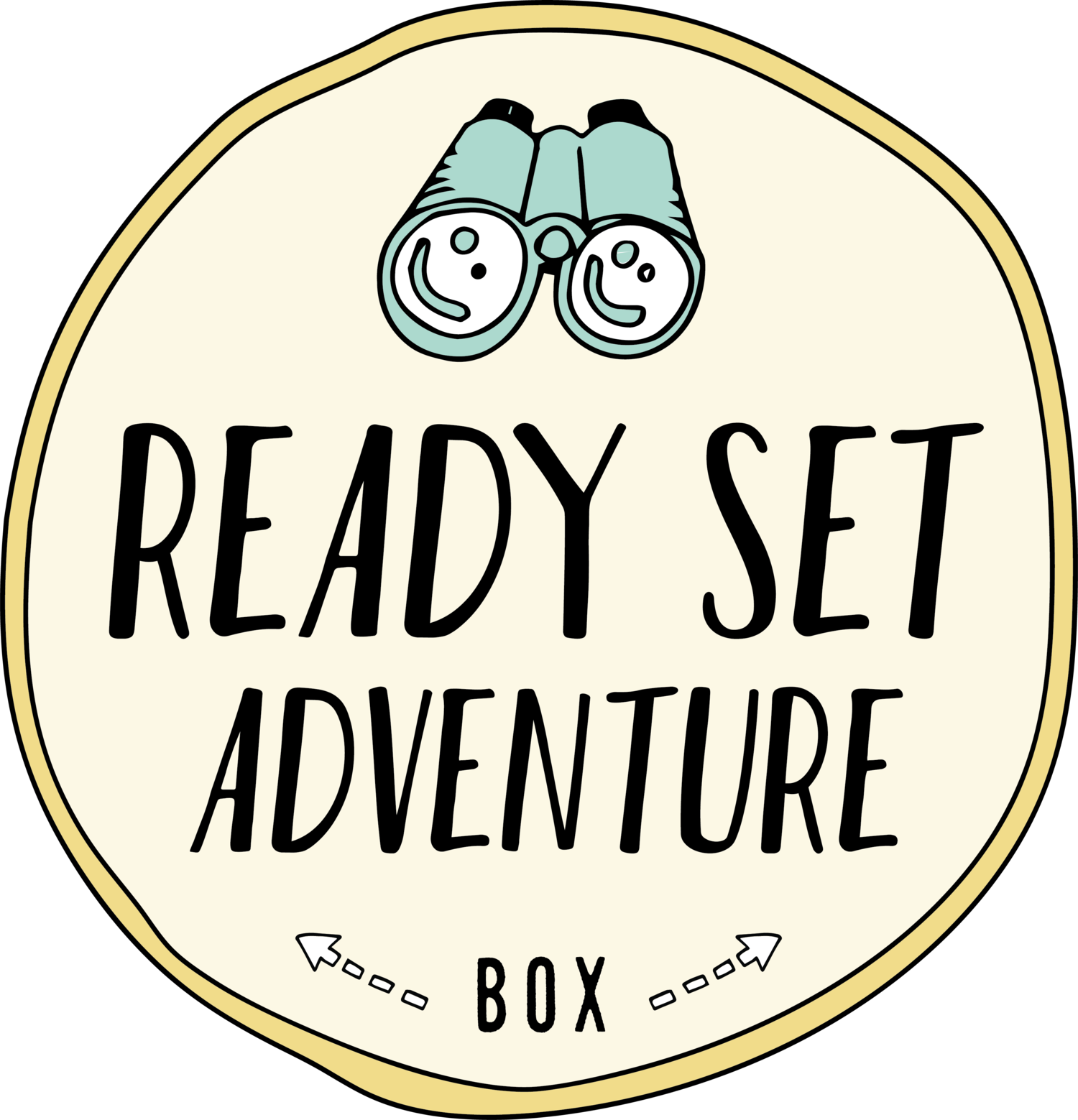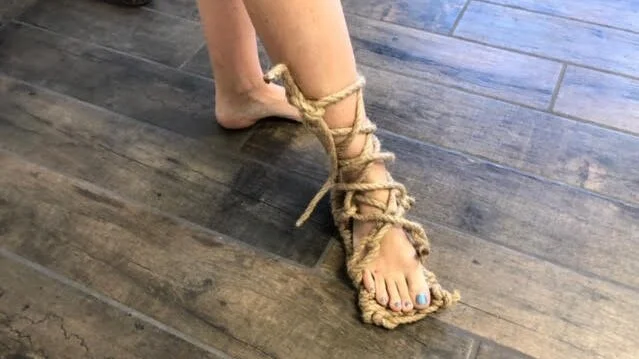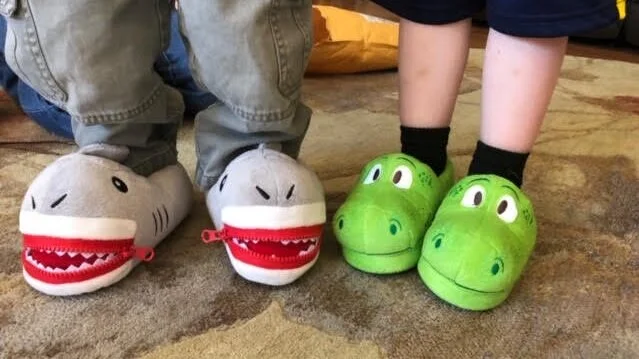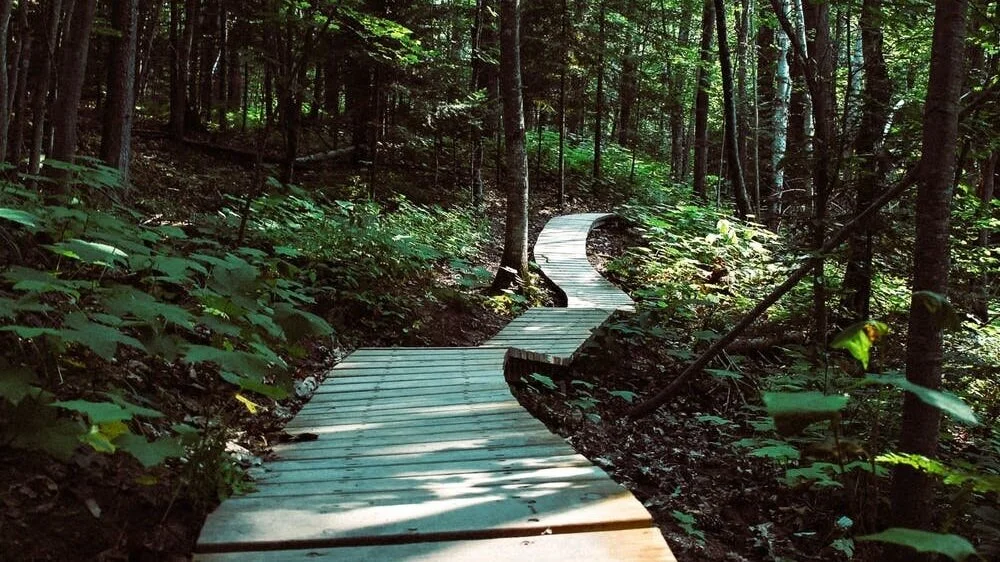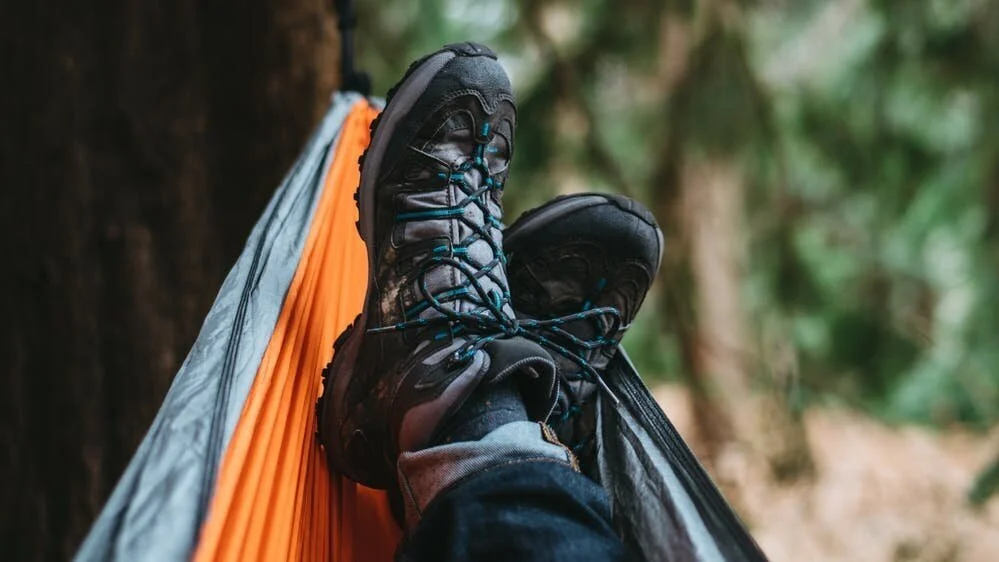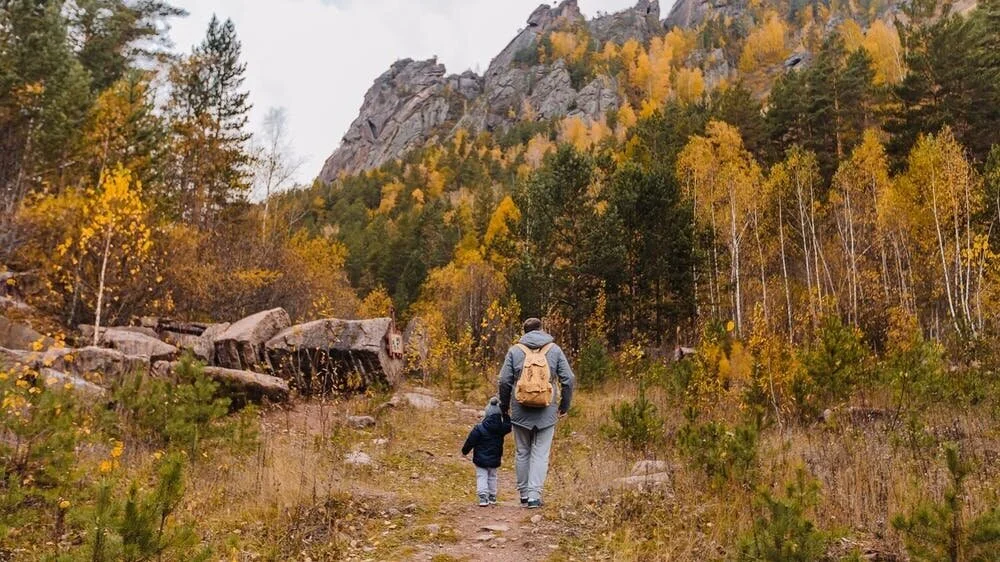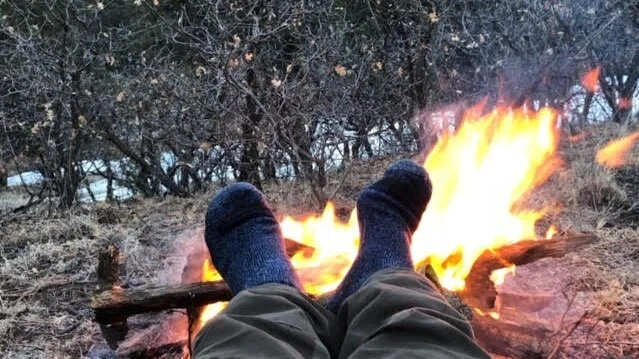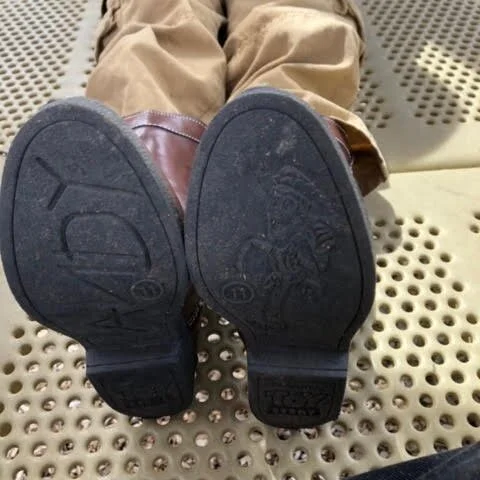This is my time-tested boots fit guide. It works for hiking boots for men, hiking boots for women, and most importantly hiking boots for kids. Honestly, this check list is not just for hiking boots, but is a guide that can be used to save money and answer the question: How should a child’s shoe fit?
How should a child’s shoe fit? This is a critical question for both safety and comfort, but it is also a valuable question to the pocket book. Kids are constantly growing, and hiking boots are expensive. Should boots be tight or loose? Am I paying too much for kid’s boots? These are just a few of the questions that go through my head while shopping for my little adventurers. My intention with this boots fit guide and checklist is to answer these and many more questions to help save you money and ensure a good time on your adventures. After all, one of our main forms of transportation is our feet, and nothing can ruin a trip more than blisters or foot discomfort.
Before I go on, any time I write about gear I like to add this little note. I do interviews and research which leads to my own opinions. It is always my goal to give you the best information possible at the time, but when it comes to gear all information is dated. Every few minutes someone has a new idea that someone else is going to apply to their gear. Make sure to check with clerks at reputable outdoor stores to make sure that you have the most up-to-date information.
These surprising comfortable and effective hiking boots are still used all around the world. But, for some, an update in technology might be needed. To learn how to make these awesome hiking sandals check out https://www.survivalskillofthemonth.com/
First, let’s look at the question of what type of boots am I looking for? Then we will spend special attention looking at how should boots fit?
What types of boots am I looking for?
This is actually the easy part. Most people can answer the questions of: what type of shoes should I wear with a dress, what type of shoes should I wear on a run, or what type of shoes should I wear with skinny jeans. Picking the proper types of hiking shoes is not that different. When it comes to protection from the elements, cushion, and ankle support, hiking shoes and boots tend to be more durable than your normal tennis shoes. But just like with regular shoes, the first step in picking out new adventure footwear is to be honest with yourself about your adventurers activities and activity levels.
Here we have a perfect fit, and they are super comfortable. But these shoes would be incredibly wrong for most outdoor adventures.
A few questions to ask yourself:
What type of terrain will we be traveling on?
If your hikes tend to be mostly nature trails, zoos, museums, or sidewalks while walking the dog, then a decent pair of hiking tennis shoes are likely all you need. If you are more likely to go off trail into the back country, even if only a couple times a year, or carrying a backpack over rocky trails, then you should look into some sturdier boots. Weather is also a concern. In my neck of the woods Gortex hiking sneakers do not make a whole lot of sense, but in an environment more prone to moisture and rain, they could be a huge key in making a little adventurer love the outdoors.
Running shoes might be perfect for a trail like this, but if you decide to go off the trail an upgrade to hiking shoes or leather boots would be more appropriate.
2. Low boots or high boots
Low boots have come a long way since I was a kid. These are often called hiking shoes nowadays and tend to look a lot like your tennis shoes, but they are a little sturdier. Normally they are light weight, many come with steel toes for heavy shale areas, and have more flexible soles and soft uppers. Some of the benefits include their lighter weight, tendancy to be cooler, quick drying and that they do not need as much care or breaking in as leather boots. If you live in an area where hiking off trails is prohibited, or you prefer to stay on trail and the trails are not too rough or rugged, these hiking shoes are a great choice. If you live in an area where the trails are rough and rugged, or you tend to go off trail you will likely find that the low boots are a little too light weight. They are getting better, but fabric rarely holds up to rough terrain as well as leather boots.
Hiking shoes have come a long way, but with rugged travel they tend to need replacing more often then leather boots.
High top boots tend to be heavier with thicker soles and they certainly offer more protection from impact with the ground and the terrain and the temperature. Depending on where you hike this can be an extremely important factor that more than warrants a little extra money.
Both high and low boots have the option of all leather or fabric. The soft areas on fabric boots absolutely add comfort and allow for more breathability and quicker drying, but the leather option offers better protection from rolling rocks and cactuses, not to mention sprains and strains.
Decent leather boots can stand up to heavy trails, last longer, and can be treated to be waterproof.
My local REI has a section for high top off trail boots. These are almost always all leather and super durable, but there is also a significant difference in weight. My boots are 5 pounds heavier, each, than my tennis shoes. They are incredibly rugged with maximum ankle support and super tuff midsoles. As a survival instructor who travels, I needed boots that could carry me over about any terrain I could imagine. For my young adventurers, though, this would be overkill, and the weight would slow them down and seriously diminish their fun and energy levels.
Be especially conscious of weight as it can lead to a miserable foot dragging experience in younger adventurers. A heavy boot, especially if not used to them, can be like adding significant weight to your pack.
“The Take home principle here: buy the lightest boot that will serve your children’s needs and keep their feet both comfortable and safe.”
Once we assess the activity level and decide on the style of boot it is time to makes sure we get the right fit.
Boots Fit Guide
This guide will help you understand how boots should fit regardless of if you are shopping for hiking boots for men, hiking boots for women, or hiking boots for kids.
Proper fit is going to be more important to their safety, comfort, and joy than picking the right type of boot. The right type of boot is most important to your wallet and how often you have to go shopping. As long as they are quality boots, picking the wrong type may lead to being replaced more often, but your kids should still have a safe and enjoyable time. Not to mention you do not want to pay too much for gear that is overkill and will be grown out of before it has been used to its full potential.
Should boots be tight or loose?
Proper fit is critical! If your shoes are too tight they will limit the foot’s natural elasticity during walking which can effect things like frost bite, injury, general comfort and safety when moving over rocky areas. Loose shoes on the other hand are going to permit excessive foot movement inside the shoe, and are not only a safety concern, but will most likely lead to blisters.
Before you leave the house
A great way to lengthen the life of boots for growing feet is to use multiple layers of socks.
Before you google “shoe stores near me”, make sure to pack the exact kind and number of socks your children will be wearing on the trail. Personally, I prefer wool socks for any number of reasons we can talk about in the future, but whatever type of socks you pick make sure they are thick enough to provide cushioning and warmth. Consider bringing more than one pair of socks, the reason being that these little adventurers grow so fast and proper foot wear is not always cheap. A great way to decrease the expense to your wallet and increase the length of time a child can wear a boot is to have them wear two or three pairs of socks initially. Then when their feet grow, they can shed a layer of socks like a snake then shed another layer and wear just one sock. If you do this, make sure you have good soft cushiony socks, otherwise, if the foot slides too much in the socks, this can also lead to blisters.
In addition to packing up, consider when to go shoe shopping. As a general rule I normally go shopping with my little adventures earlier in the day when their energy is high and their tempers low, but with boots I do not do this. I try and shop for boots late in the day because feet tend to swell as the day goes on. This is one major reason shoes often feel great in the store but miserable after a day of hiking, working, or dancing.
There is a reason it feels so great to kick your feet up at the end of the day. Feet work hard, and tend to swell as the day goes on. It is a great idea to shoe shop later in the day to account for swollen and tired feet.
At the shoe store
Before you even try on your first pair of boots find a friendly and knowledgeable clerk. Ask loads of questions, and describe the types of adventures you are going to go on. A good clerk can also help you size your child’s feet. This can narrow down the number of boots you have to try on and keep your young adventurer from falling in love with the look of a boot that is just not going to be proper for their adventures.
There are so many choices out there. Spending a few minutes with a knowledgeable clerk can narrow down the options and save a great deal of time and frustration.
Before putting the boots on
First, we want to check for flexibility. We will do this both before putting the boots on and during wearing them.
You should be able to bend the sole, part where the ball of your foot rests, easily across its widest parts.
Then you want a stable heel and a rigid shank. The shank is the narrow part of the sole between the instep.
Check for workmanship. Do you see any loose threads or faulty glue on the outside?
Slip your hand into the boot, feel around for rough edges, ridges, or seams. These are blister factories.
Look at these items before putting your boots on as there is no point falling in love with a pair of boots that are poorly made.
Finally putting the boot on
1. Once we actually get the boot on, we want to keep the boot unlaced.
2. Have your little adventurer push first one foot, then the other as far forward in the boot as possible. You should barely be able to fit your index finger between the heel and the back of the boot. Remember all boots, especially leather, will stretch some. We do not want to get blisters or sprained ankles.
3. Have them sit down and kick their heels against the floor. The back should feel snug and comfortable.
4. Now lace the boots snuggly.
5. Hold down the front of the boot and have your little adventurer try to lift up their heal. They should not be able to lift their heal inside the shoe more then an eighth of an inch.
6. Use your thumb and forefinger to push down with pressure all around the shoe. Make sure the toes are not bumping up against the front of the shoe.
7. Feel around the shoe as well and make sure that the widest part of the foot rests in the widest part of the shoe.
8. Make sure there are no huge gaps where the boot may be rubbing right against the foot.
9. Have your little adventurer walk around the store for at least 15 minutes. Don’t just have them walk randomly in circles. See if you can find some stairs to walk up and down, if you’re lucky you can find a ramp in the store. Have them try for any slopes, stairs, step over things, step on things, sit down and get up. Their feet should not slide around on this walk, but they should be able to wiggle their toes. It needs to feel comfortable. We want maximum circulation without looseness.
“Remember what Grandpa said, “ If they do not fit in the store, they certainly will not fit in the back country.””
Before check out
Before you leave the store, make sure to get any information on return policies and trade-ins for kids. Do not forget to ask about boot care, cleaning, or anything that can prolong the life and comfort of your boots and waterproofing.
Well maintained boots will last a surprisingly long time and be a constant companion on many an adventure.
Back home
Hopefully you checked on the return policy before check out. Allow everyone a week or two of walking around the house, going up and down stairs, and such. Then when you are fairly confident the boots or shoes are keepers, walk around the yard or neighborhood perhaps walking the dog before you take them on a hike. This not only further tests the boots, but it also helps to break them in especially if you went with the heavier more durable pair.
I have used this strategy since my grandfather taught it to me as a boy. The tips above can save you money and they can help lead to a great adventure, no matter where your feet take you. Now that you have read the meaty version, here is a link to a (FREE) quick check list that you can screen shot and take to the store with you so you do not have to memorize or write anything down.
The above list can seem a bit much, but remember that the foot is where the adventurer and the adventure trail meet. Your footwear is one of your most important pieces of gear. Poorly fitting foot wear can not only be dangerous, but it is one of the quickest ways to ruin a good adventure. We would love to hear if you have any great tips or tricks or questions. You can reach us at contact@readysetadventurebox.com. Make the shopping fun, remember there is no such thing as a small adventure, not even to the store. Stay safe out there, see you on the adventure trail.
